Heat pump hot water units are the most efficient, cheapest, smartest and most environmentally friendly way to heat water for you home.
But it’s not easy to choose a unit. There are heaps of units on the market and it can be confusing.
We’ve developed a framework of four factors to look at when choosing a heat pump hot water unit. The four key factors are:
- Cost
- Reliability
- Refrigerant
- Maintenance
Throughout this article and video, I clearly explain how to choose a heat pump hot water unit. By the end, you’ll be well equipped to make an informed choice, and also understand why I recommend certain brands.
Please also see our article on “How much does heat pump hot water cost and how much will you save?”
—
A quick note before we start: Powrhouse is independent. While you’ll see that I currently only recommend one or two products, I are not affiliated with those products. We have a very clear mission at Powrhouse which is to make it easy for people looking to install a hot water heat pump – we only deal in the best brands, we provide the best advice and we will not be beaten on price.
—
Main Factors for Choosing Heat Pump Hot Water
Our framework for analysing heat pump hot water unit brands includes four main factors: cost, reliability, refrigerant and maintenance.
Before we go through each of these below, I should explain minor factors: noise, heat, geography and where the units are made. These are minor factors as they’re mostly no longer an issue. Some older units developed a reputation for being noisy, not working in certain colder climates and not heating the water sufficiently. This really isn’t an issue anymore for good quality. There’s every chance these minor factors will still be an issue for cheaper, poor quality units. I prefer Australian made units, but this is not always possible and should be balanced against price.
Let’s dive in….🤿
1. Cost
Cost is easy to analyse – all is being equal, lower is better.
Good quality units range from $1,500 to $6,500 (subject to rebate availability). I like the Rapid X6 (210L) and Dynamic X8 (270L) sold by Aquatech, which we typically sell fully installed for around $1,500 and $1,800 respectively.
Reclaim and Sanden are the two leading units on the market. Unfortunately they sell for upwards of $5,000 and as well as being too expensive for many people, I don’t think the higher price tag is justified. I have seen other units on the market for less than $1,000, but these tend not to satisfy the other factors below.
2. Reliability and Warranty
There are two approaches on how to choose a heat pump hot water unit: buy cheap and hope it lasts, or pay a bit extra and know that you are buying a good quality unit.
We only do the latter.
When analysing reliability, I recommend people research reviews and online forums. It’s one thing to take my word, or a plumber’s word, but a multitude of reviews are very helpful. I also place greater value on reviews of units that have been operating for a long time. It’s one thing to read a review of a unit installed 3 months ago, but it’s more valuable to read a review of a unit that has been operating for 5 plus years. I like Product Review and the Facebook Group My Electric Efficient Home.
Our approach at Powrhouse is simple – buy a good quality unit which will last a long time, rather than try our luck with a poor quality unit, which in some cases may last, but in many cases will not.
Some further points about warranties – all units installed under the Victorian government rebate must come with a 5 year warranty. It’s important to buy from a reputable manufacturer, preferably with a long track record, that will honour any warranty. “Rebate hunters” selling free or $39 units won’t be around in 5 years to speak to or honour their warranty.
3. Refrigerants
As we transition from fossil fuel powered to clean energy, many of us are happy to pay a “green premium” – that is, a premium for green options. The beauty about heat pump hot water units is they come with a “green discount” – they are greener and cheaper to run, and in many cases, cheaper to install.
However, not all units are equally green. In fact, many well known units out there brand themselves as the best choice for the environment, but when we dive into the detail, we realise that’s not the case.
Each heat pump hot water unit uses a refrigerant that acts as the medium that transfers heat from air to water. There are a wide range of refrigerants on the market, but many of them are terrible for the environment. In fact, most of the heat pump hot water units on the market use terrible refrigerants (but this is changing).
The Department of Climate Change, Energy, the Environment and Water has a helpful list of refrigerants and their global warming potential (GWP). The GWPs are values that allow direct comparison of the impact of different greenhouse gases in the atmosphere by comparing how much energy one tonne of a particular gas will absorb compared to one tonne of carbon dioxide. The GWP of carbon dioxide is therefore 1 and the GWP of propane, the refrigerant used in Aquatech’s products, is 3.
The GWP of other refrigerants commonly used in heat pump hot water units is concerning. We’ve highlighted below the GWP of R-134A which is 1,430! If the refrigerant used in one of these units were to escape, it would trap 1,430 times the amount of heat in the atmosphere than carbon dioxide!
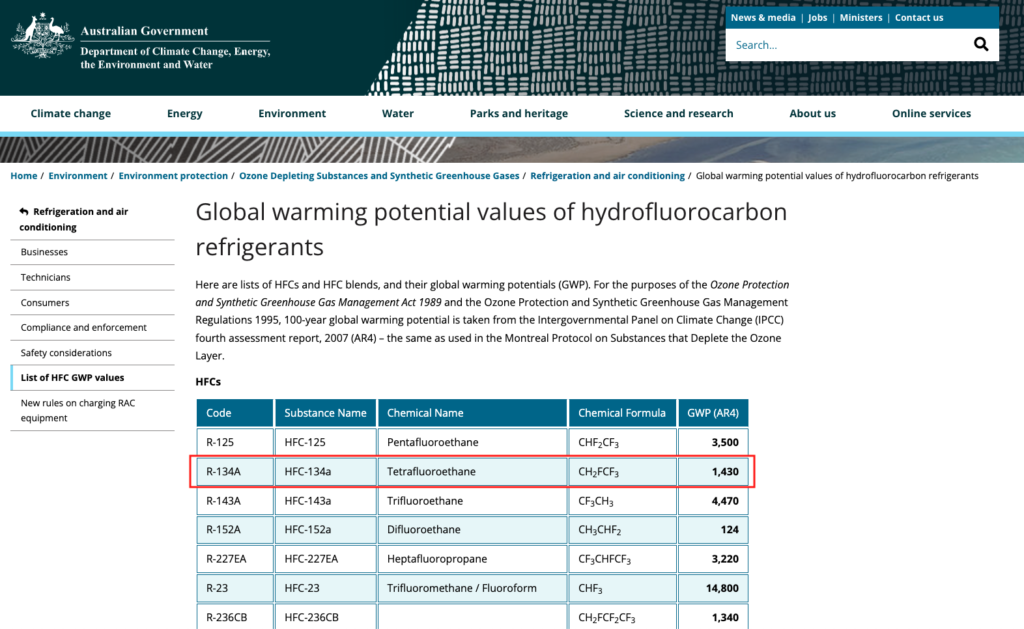
Governments clearly agree with us as these units are no longer eligible for rebates and being forced out of the market. The good news is that there are affordable units on the market which use better refrigerants with a low GWP. Powrhouse will only ever deal in and recommend these units.
4. Maintenance
I have read every Owners Manual of heat pump hot water units on the market. The last factor to analyse is maintenance – requirements to keep the unit running smoothly and meet warranty conditions. Again the Aquatech units stack up very well. They require 6 monthly light maintenance by the owner and a major service after 5 years by a plumber. Most of the units on the market are similar. Some however are onerous. For example, Emerald and Haier require owners to service their units every six months by a qualified tradesperson. This will significantly drive up the running costs, not to mention the hassle of frequently calling the plumber 10 times more frequently than other units. Another example is EvoHeat which only allow servicing by their tradespeople.
Maintenance requirements shouldn’t be the driving factor in making a decision, but it pays to be aware of what’s required when comparing units.
Mapped – The Market for Heat Pump Hot Water Units
We have mapped every unit on the market so they can easily be compared.
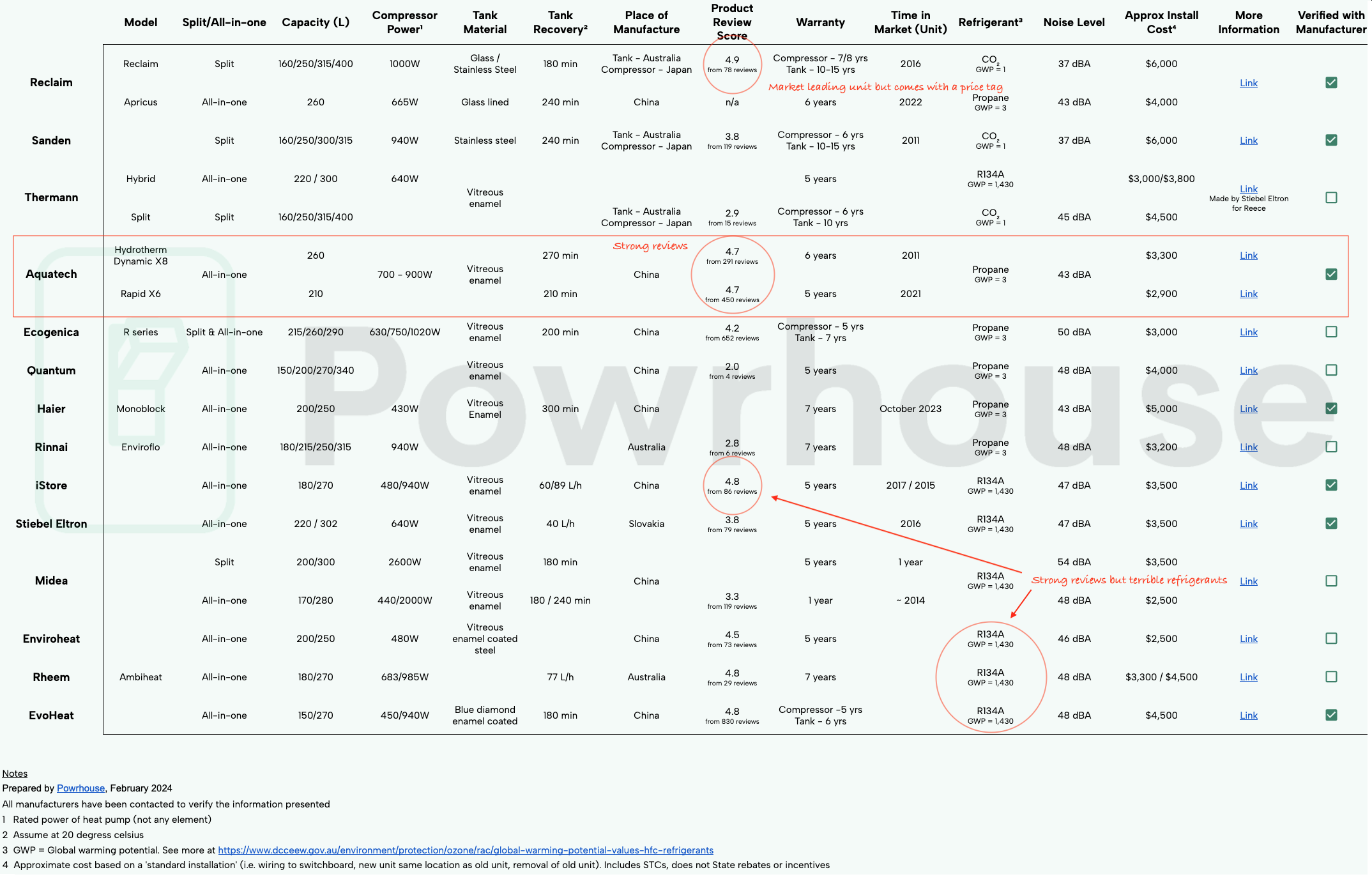
Please click here to view the entire spreadsheet
Aquatech Dynamic X8 and Rapid X6
I believe Aquatech’s Rapid X6 and Dynamic X8 are the best value units on the market.
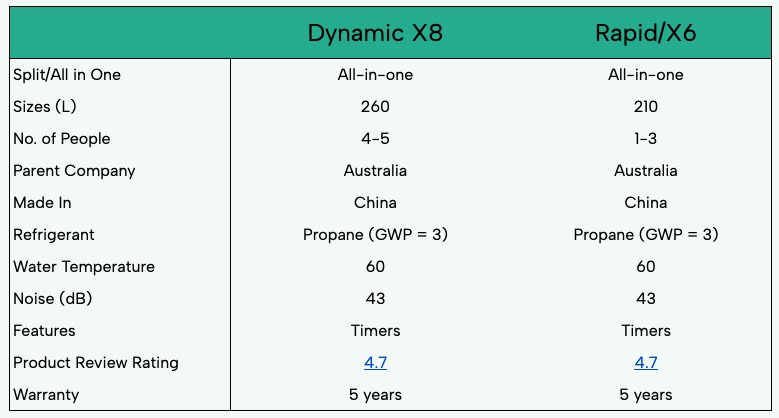
Please see separate articles on why we like the Rapid X6 and why we like the Dynamic X8.
The only difference between the two units is the size of the tanks. The Rapid X6 stores 210L and the X8 stores 260L. We recommend the Rapid X6 for households of 3 or less people and the Dynamic X8 for households of 4-5 people.
Summary
I hope you have found this helpful. Whether you choose to go with Powrhouse or another provider, I hope this framework helps in selecting your next heat pump hot water unit.
The technology and market is developing at a rapid rate. Powrhouse will likely recommend and deal in other units, and we are certainly keeping an eye on market developments.
If you are interested in a quote for either of the Aquatech products, or if you have any other questions, we’d be delighted to hear from you. Please feel free to contact Tim via our Contact Form.
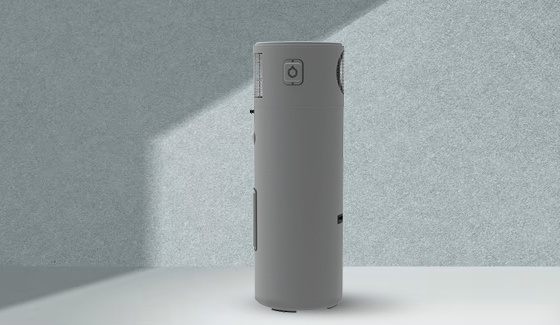
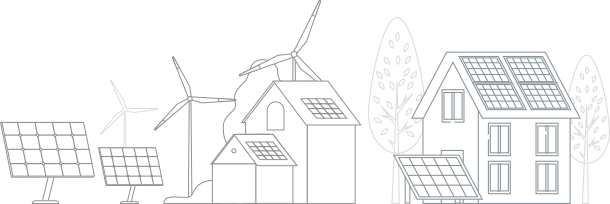
 Subscribe to Our
Subscribe to Our